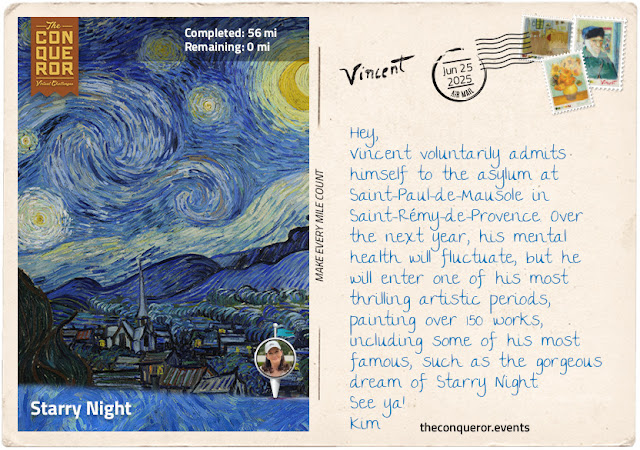Please note: This piece touches on themes of suicide
The people of Arles began to turn against Vincent, ostracising him and eventually petitioning the police to have him removed from the town. Vincent was admitted to the hospital Hôtel-Dieu-Saint-Espirit in late December 1888. Here, he lived unhappily, but come spring, Vincent felt better and returned briefly to the Yellow House in an attempt to begin living a normal life. Unfortunately, his mental health once again began to deteriorate. Finally, Vincent wrote to Theo and told him he would leave Arles and voluntarily commit himself to the asylum at Saint-Paul-de-Mausole, where he would spend the next year.
Here things began to improve. He was allowed to paint, provided an extra room for a studio and free rein of the hospital's beautiful grounds. Later, he was allowed outside the gates to paint the surrounding countryside (where he painted many famous works, such as Wheatfields with Cypresses, linked below). Vincent’s spirits were further buoyed by the news of the birth of his nephew, whom Theo named after his brother, calling him Vincent Willem van Gogh.
Starry Night shows the view of Vincent’s room just before dawn, with an imagined village below. It foregrounds a darkened cypress tree, set above a sleepy town dominated by a church spire, just a few lights coming on in the windows. The vast majority of the composition is dedicated to a luminous, swirling night sky, where the stars hang like Japanese lanterns, enveloped in the clouds. A large crescent moon illuminates the sky in a soft blue light as the first touches of dawn lighten the hills in the background. Again, Vincent used the impasto technique here, reportedly applying the paints directly onto the canvas and simply mixing them with his fingers (this detail is usually dismissed as a myth now, but it’s a great image), then attacking the painting with broad, arching strokes to create a strong, expressive texture and motion.
Interpretations of Starry Night differ. Many attribute the dreamy, visionary nature of this painting to a private mystical experience. Some see it as a religious painting, some as a paean to the terrifying sublimity of nature. Others read the swirling motion of the work as reflecting the artist’s inner state.
I love how this painting captures a feeling of spiritual awe as the clouds swirl around the stars, challenging my preconceptions of the stillness and serenity of the night sky. We are looking at a scene where, although the sky is dark and turbulent, the stars, the moon and the coming dawn mix light and hope into the darkness. To me, it is a painting that wrestles with the constant contradictions we all face whilst living our lives. How happiness mixes with grief, beauty with terror, and ultimately, life with death.
After painting Starry Night, Vincent would live only a few more months. He would leave the asylum in May 1890 and move to the town of Auvers-sur-Oise. Here, he was treated by Dr. Paul Gachet, a specialist in mental illness and an amateur artist, who quickly became a close friend and confidante. In late July, Vincent died, reportedly by his own hand (though it may have been a simple, tragic accident).
It was good to learn a little more about this painter, tortured yet so productive with his art. It encouraged me to get my watercolors out again.
- 56 miles of indoor/outdoor cycling, rowing and walk/running
- 5 postcards received
- 4 local interest posts (more about the Impressionists and Van Gogh's mental health)
- 5 local spots viewed
- 5 trees planted
Book read: A Year in Provence by Peter Mayle - a quick, delightful view into the "provincial life". There are 3 books in this series.











No comments:
Post a Comment
It's so good to see you here . . .